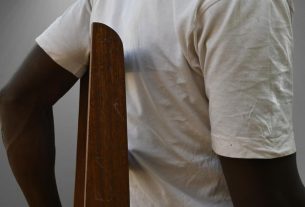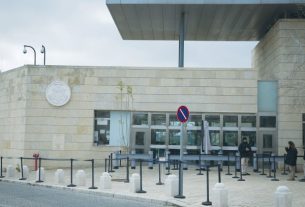[ad_1]
Central Macedonia, a region on the northern mainland of Greece, is an important producer of food. It generates a quarter of the country’s agricultural output and is the source of much of Greece’s table olives, peaches, wine and dairy products. But this productivity also results in large amounts of agricultural waste.
EU-funded researchers are now exploring how and under which conditions this waste could be recycled and reused to develop a wide range of useful bio-based products, including fertiliser, agrochemicals and even nutritional additives.
Towards a bio-based economy
Spanish environmental engineer Pedro Villanueva Rey is coordinating a team of researchers from France, Germany, Greece, Italy, Spain, Sweden and the UK to turn various biological waste streams across Europe into new and desirable resources.
“Introducing these secondary raw materials into the supply chain could help promote the transition towards a bio-based economy,” said Villanueva Rey. He is a senior project manager at Cetaqua, a water technology research organisation in Santiago de Compostela, Spain.
“
We want to be able to provide data-driven recommendations for the sustainable use of these biological resources.
For this to happen, however, industry and consumers will need assurances that the biowaste is safe and suitable for reuse.
While much household rubbish is sorted and recycled these days, unwanted biological by-products from industrial and agricultural processes are still widely discarded. There is also the added dilemma of how to get rid of it. One of the obstacles to reuse is the need for quality control and certification.
Thanks to funding from the EU, the research team is combining its expertise within a three-year collaborative effort called BIORECER. The researchers are tracking and assessing the potential for the wider reuse of biological waste as a replacement for materials derived from fossil fuels like petroleum, coal and natural gas.
They are also looking at ways to ensure the consistency and safety of a variety of potential biowaste feedstocks.
Tapping new potential resources
In Greece, the researchers are exploring possible scenarios for reuse of biological waste from sources such as the pruning of tree crops, residue from olive and grape processing, or leftover plant waste from cereal crops. They are also looking at three other potential biowaste reuse scenarios in Spain, Italy and Sweden.
In Galicia, Spain, a major fishing hub for the EU, they are considering reuse options for the huge amounts of fish waste and cooking water generated by the fish canning industry. The BIORECER team will work closely with Galician bio-based companies to develop the value chains for potential products from these waste sources, as well as from algae and urban sewage sludge.
Research in the Lombardia region of Italy will focus more on urban biological waste, mainly from sewage and organic municipal waste, as well as food waste from large companies. Potential products that could be derived from these feedstocks include bio-based chemicals and fertilisers.
Meanwhile in the Vӓsternorrland region of northeastern Sweden, industrial forestry – which represents approximately 10 to 12 % of the Swedish industry in terms of employment and sales – produces large volumes of what Swedes call grot (debris composed of branches, roots and tree tops), sawdust, bark and sludge.
The researchers are examining whether green chemicals and materials could incorporate materials derived from this waste.
Developing a market
The aim is to make it more worthwhile for companies to reuse the resulting recycled materials. This could be a win-win-win situation, giving biowaste a new life, reducing the use of non-renewable resources and cutting down on the overall amount of waste.
“It could be a starting point to develop a real market related to all these products,” said Villanueva Rey.
As part of these efforts, the team aims to develop guidelines to improve certification schemes for bioproducts. One criterion is their lifetime environmental impact, taking into account factors like carbon emissions, the presence of toxic compounds, transport and storage.
They believe better certification could boost the level of acceptance by industry and society, leading to recycled biological waste being used in a broader range of products.
The team examined various existing certification schemes to inform their research. These include ISCC PLUS, which has a globally applicable voluntary certification system for the bioeconomy. This mainly refers to alternative feedstocks like biomass (e.g. cellulose and agricultural residues) and waste materials such as used cooking oil, animal fats and solid municipal waste.
The researchers also considered certification schemes like those of the Forest Stewardship Council and the Roundtable on Sustainable Biomaterials.
Seal of approval
The BIORECER team aims to develop a comprehensive framework to complement and strengthen existing certification schemes for biochemicals and biomaterials, in addition to the current schemes focusing mostly on the energy, food and animal feed sectors.
Lucía González Monjardin, a project manager at Cetaqua, is helping to identify the gaps.
“If, for example, you’re using a solvent to produce bioplastics, there may not be a certification scheme to confirm that the solvent is bio-based,” she said. “By adding one, you’re providing assurances for the people using these raw materials that the product complies with regulations and achieves the same results as conventional options.”
Their goal is to help producers, traders and consumers track the sustainability of bioresources, and enhance connection and collaboration between organisations that run certification schemes and companies that want their products certified.
Adding value
In Greece, the BIORECER case study is at a crucial phase where real-life data is being integrated with the researchers’ findings on the sustainability criteria of feedstocks.
“
One of the scopes of the project is to mitigate greenwashing, on which there’s a huge debate in the EU.
“We want to be able to provide data-driven recommendations for the sustainable use of these biological resources,” said Dr Sotiris Patsios, a post-doc chemical engineer at the Chemical Process and Energy Resources Institute at the Centre for Research and Technology Hellas (CERTH) in Thessaloniki, Greece, which is conducting the case study.
One objective is to help farmers increase the economic value of their activity by encouraging more bio-circular use where materials traditionally considered as waste are reused, further used or recycled in a loop without dropping out of the economy.
“For instance, farmers may burn waste from activities like pruning or use them for lower-value economic activities like the production of biogas or biofertilisers,” said Patsios. “We want to develop value chains with a higher economic value, such as those for wider biomaterials and biochemicals.”
One example is the production of wooden construction products like chipboard made from composite biomaterials.
Data-driven guidance
However, collecting reliable data can be challenging. This is something that concerns Dr George Banias, research director at the Institute for Bio-economy and Agri-technology at CERTH.
“To facilitate the transition from a linear economy that leaves behind a lot of waste to a bio-based circular one, it is crucial that some of these gaps in data be filled,” he said. According to Banias, the development of tracking and traceability schemes is necessary to have reliable data.
If the BIORECER collaboration can achieve this, it will also help combat misleading environmental tactics, or greenwashing. This is when companies use advertising that makes false environmental claims – a practice that the European Parliament has moved to outlaw.
“One of the scopes of the project is to mitigate greenwashing, on which there’s a huge debate in the EU,” said Banias.
Research in this article was funded by the EU’s Horizon Programme. The views of the interviewees don’t necessarily reflect those of the European Commission. If you liked this article, please consider sharing it on social media.
[ad_2]
Source link



